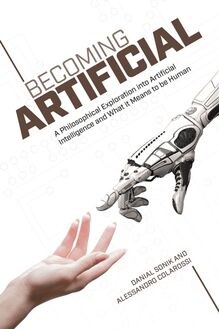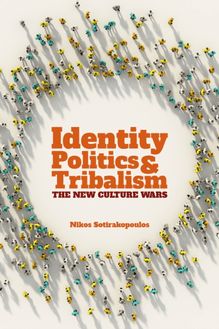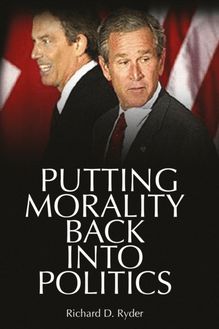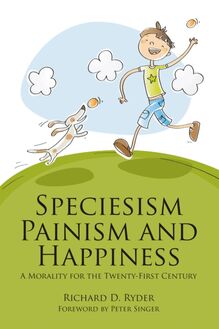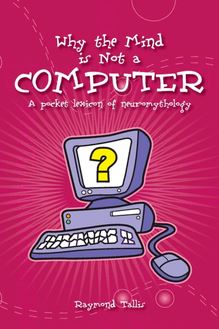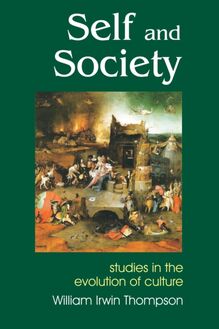-
 Univers
Univers
-
 Ebooks
Ebooks
-
 Livres audio
Livres audio
-
 Presse
Presse
-
 Podcasts
Podcasts
-
 BD
BD
-
 Documents
Documents
-
- Cours
- Révisions
- Ressources pédagogiques
- Sciences de l’éducation
- Manuels scolaires
- Langues
- Travaux de classe
- Annales de BEP
- Etudes supérieures
- Maternelle et primaire
- Fiches de lecture
- Orientation scolaire
- Méthodologie
- Corrigés de devoir
- Annales d’examens et concours
- Annales du bac
- Annales du brevet
- Rapports de stage
La lecture à portée de main
Vous pourrez modifier la taille du texte de cet ouvrage
Découvre YouScribe en t'inscrivant gratuitement
Je m'inscrisDécouvre YouScribe en t'inscrivant gratuitement
Je m'inscrisEn savoir plus
Vous pourrez modifier la taille du texte de cet ouvrage
En savoir plus

Description
Sujets
Informations
| Publié par | Andrews UK |
| Date de parution | 07 octobre 2011 |
| Nombre de lectures | 0 |
| EAN13 | 9781845403003 |
| Langue | English |
Informations légales : prix de location à la page 0,0324€. Cette information est donnée uniquement à titre indicatif conformément à la législation en vigueur.
Extrait
Title Page
PANIC ON A PLATE
How Society Developed an Eating Disorder
Rob Lyons
Publisher Information
Copyright © Rob Lyons, 2011
The moral rights of the author have been asserted.
No part of this publication may be reproduced in any form without permission, except for the quotation of brief passages in criticism and discussion.
Originally published in the UK by Societas
Imprint Academic, PO Box 200, Exeter EX5 5YX, UK
Originally published in the USA by Societas
Imprint Academic, Philosophy Documentation Center
PO Box 7147, Charlottesville, VA 22906-7147, USA
Digital version converted and published in 2011 by
Andrews UK Limited
www.andrewsuk.com
Acknowledgements
This book is an expansion of many ideas and arguments that I have discussed on spiked ( www.spiked-online.com ) and I’d like to thank everyone who has worked there for providing me with the opportunity to write and for the innumerable stimulating conversations that have helped to shape my view of the world. In particular, my former spiked colleague Jennie Bristow helped enormously in the process of getting these ideas down on paper. Thanks also to Michael Fitzpatrick, Tony Gilland and Jason Smith for useful comments on draft versions of the book.
Thanks also to Claire Fox, director of the Institute of Ideas, for providing me with the push to get this book started, and to Julian Hunt, formerly of the Food and Drink Federation, for providing eye-opening insights into the world of food policy and politics.
Most of all, thanks to Justine Brian for introducing me to posh nosh, debating ideas about food and simply being good company over many a good meal.
If the ideas in these pages are a feast, it is the product of many people’s efforts. If what follows is a dog’s dinner, blame me.
Rob Lyons
May 2011
Introduction
Until comparatively recently, there was only one question that the majority of people needed to ask in relation to food: how will we get enough? Most of the world’s population, for most of human history, has lived in a constant struggle to obtain enough food to survive and thrive.
As Tom Standage engagingly notes in his book An Edible History of Humanity , the attempt to obtain food, and the way in which surplus food is used, is a major driving force of history. Civilisation is based upon the switch from hunter-gathering to settled agriculture. When farming started to produce a surplus, the monopolisation of that surplus was the basis for the creation of a ruling class in society. Food shortages have been a major factor in the outcome of wars and helped to bring down the Soviet bloc.
There are still many people - at least one billion according to the United Nations Food and Agriculture Organisation (FAO) - for whom the struggle to eat is a constant battle. It is estimated that eight million people per year die of hunger or related diseases. But for almost everyone living in developed countries and for a growing proportion of the population in developing countries, the problem of food has ceased to be about keeping body and soul together.
According to FAO statistics for 2007, for each person in the world there was food to provide an average of 2,768 calories, 76 grams of protein and 78 grams of fat per day. Not all of this food is actually consumed - much of it is wasted, as we shall see - nor is it evenly distributed. For example, people in the UK had access to the equivalent of 3,426 calories per person per day while in the war-torn Democratic Republic of Congo, the average was just 1,500 calories per person per day. Overall, the FAO estimates that 13 per cent of the world’s population was undernourished in 2007, and that the absolute number of people who experience food shortages (as opposed to the proportion of the total population that is going hungry) has been rising for over a decade.
Yet the countries that seem to be fretting most about food are the ones in which the food question, as it was historically understood, has been solved. The primary concern now seems to be that we are eating too much, of the wrong kinds of food, produced in a way that is not environmentally sustainable. The topic of food has become a hook on which to hang all sorts of prejudices and panics from class snobbery to anti-capitalism. While in most cases there is some truth to the concerns expressed, very often these fears are blown out of all proportion. The argument in this book is that Western societies are now suffering from a kind of eating disorder, where food, rather than being a source of nourishment and pleasure, has come to be seen as a source of pollution and fear.
A big fat panic
Perhaps the biggest food-related concern in recent years has been the threat of an ‘obesity timebomb’. In the US and the UK, the proportion of the population that is now deemed to be obese has risen sharply in the past three decades. In relation to America’s expanding waistlines, the US Center for Disease Control and Prevention (CDC) notes just how rapid the change has been:
In 1990, among states participating in the Behavioral Risk Factor Surveillance System, 10 states had a prevalence of obesity less than 10 per cent and no states had prevalence equal to or greater than 15 per cent. By 1999, no state had prevalence less than 10 per cent, 18 states had a prevalence of obesity between 20-24 per cent, and no state had prevalence equal to or greater than 25 per cent. In 2009, only one state (Colorado) and the District of Columbia had a prevalence of obesity less than 20 per cent. Thirty-three states had a prevalence equal to or greater than 25 per cent; nine of these states (Alabama, Arkansas, Kentucky, Louisiana, Mississippi, Missouri, Oklahoma, Tennessee, and West Virginia) had a prevalence of obesity equal to or greater than 30 per cent. [1]
In The End of Overeating , paediatrician and former US Food and Drug Administration (FDA) commissioner David A. Kessler notes how average weights have changed. For example, for American women aged 20-29, average weight rose from 128 pounds in 1960 to 157 pounds in 2000. For women aged 40-49 years, the change was from 142 pounds in 1960 to 169 pounds in 2000. However, he also notes how the averages hide a very dramatic divergence between the majority of the population, whose weight has increased moderately, and a minority which seems to have a strong predisposition to gain weight. [2]
In the UK the statistics are less dramatic, but there has been, until very recently, a trend towards rising rates of obesity. In 1980, less than 10 per cent of the UK population was considered to be obese. By 2008, 24 per cent of women and 25 per cent of men fell into the obese category. Recent official statistics suggest that Britain’s weight gain has plateaued, at least for now. [3] The rise in obesity rates may also be levelling off in the US. [4]
Yet the UK and US are not the fattest nations on earth - other countries with smaller populations, such as Samoa, Jordan and Saudi Arabia are even heavier. Indeed, the rise of obesity is a worldwide phenomenon, with substantial portions of the populations of developing countries deemed to be overweight, particularly those living in cities.
Does the growth of the human girth matter? The official line is ‘yes - and Something Must Be Done’. Obesity has been associated in numerous studies with a variety of chronic conditions, particularly heart disease, cancer and type-2 diabetes. If we do not tackle the problem of obesity, we are warned, millions will die and many more will suffer years of ill-health. In 2004, the US secretary of health Tommy Thompson declared that 400,000 Americans were dying every year because of their weight. The British celebrity chef and food campaigner, Jamie Oliver, has warned that children will die at a younger age than their parents if eating habits don’t change. Governments around the world have launched all manner of campaigns to try to get their citizens to cut the calories and do more exercise in a bid to reverse the rise in obesity. Yet, as I examine in chapter 4, it is questionable whether the simple equation ‘obesity = disease’ is actually true.
Junk culture
The current obsession with the nation’s diet is not restricted to how much we eat, but also includes attempts to micromanage what we eat. A survey for the UK Food Standards Agency published in February 2010 showed that only 35 per cent of adults - and just 15 per cent of teenagers - consumed the recommended five portions of fruit and vegetables per day. [5] Intakes of saturated fats and sugar remained above the government’s ‘target levels’, while consumption of oily fish and dietary fibre was considered too low.
All sorts of fantastic claims are made about the importance of eating these recommended foods, usually based on limited research, to the point where nobody raises an eyebrow at the notion of national governments setting targets for their citizens’ fish consumption. Our salad-dodging ways apparently mean that we may be missing out on important nutrients, and not just the obvious ones like protein, vitamins and minerals. Flavonoids and antioxidants, omega-3 fatty acids and numerous other micro-nutrients have had grand claims made about their health-preserving powers in recent years, from preventing heart attacks to improving learning.
Indeed, poor diet has been claimed to be the root of antisocial behaviour in and out of the classroom. In 2008, John Stein, professor of physiology at Oxford University, told The Times :
We see on TV every day somebody who has been stabbed or shot. That is often a consequence of people not being able to control their anger, and being unable to focus their attention on the consequen
-
 Univers
Univers
-
 Ebooks
Ebooks
-
 Livres audio
Livres audio
-
 Presse
Presse
-
 Podcasts
Podcasts
-
 BD
BD
-
 Documents
Documents
-
Jeunesse
-
Littérature
-
Ressources professionnelles
-
Santé et bien-être
-
Savoirs
-
Education
-
Loisirs et hobbies
-
Art, musique et cinéma
-
Actualité et débat de société
-
Jeunesse
-
Littérature
-
Ressources professionnelles
-
Santé et bien-être
-
Savoirs
-
Education
-
Loisirs et hobbies
-
Art, musique et cinéma
-
Actualité et débat de société
-
Actualités
-
Lifestyle
-
Presse jeunesse
-
Presse professionnelle
-
Pratique
-
Presse sportive
-
Presse internationale
-
Culture & Médias
-
Action et Aventures
-
Science-fiction et Fantasy
-
Société
-
Jeunesse
-
Littérature
-
Ressources professionnelles
-
Santé et bien-être
-
Savoirs
-
Education
-
Loisirs et hobbies
-
Art, musique et cinéma
-
Actualité et débat de société
- Cours
- Révisions
- Ressources pédagogiques
- Sciences de l’éducation
- Manuels scolaires
- Langues
- Travaux de classe
- Annales de BEP
- Etudes supérieures
- Maternelle et primaire
- Fiches de lecture
- Orientation scolaire
- Méthodologie
- Corrigés de devoir
- Annales d’examens et concours
- Annales du bac
- Annales du brevet
- Rapports de stage

